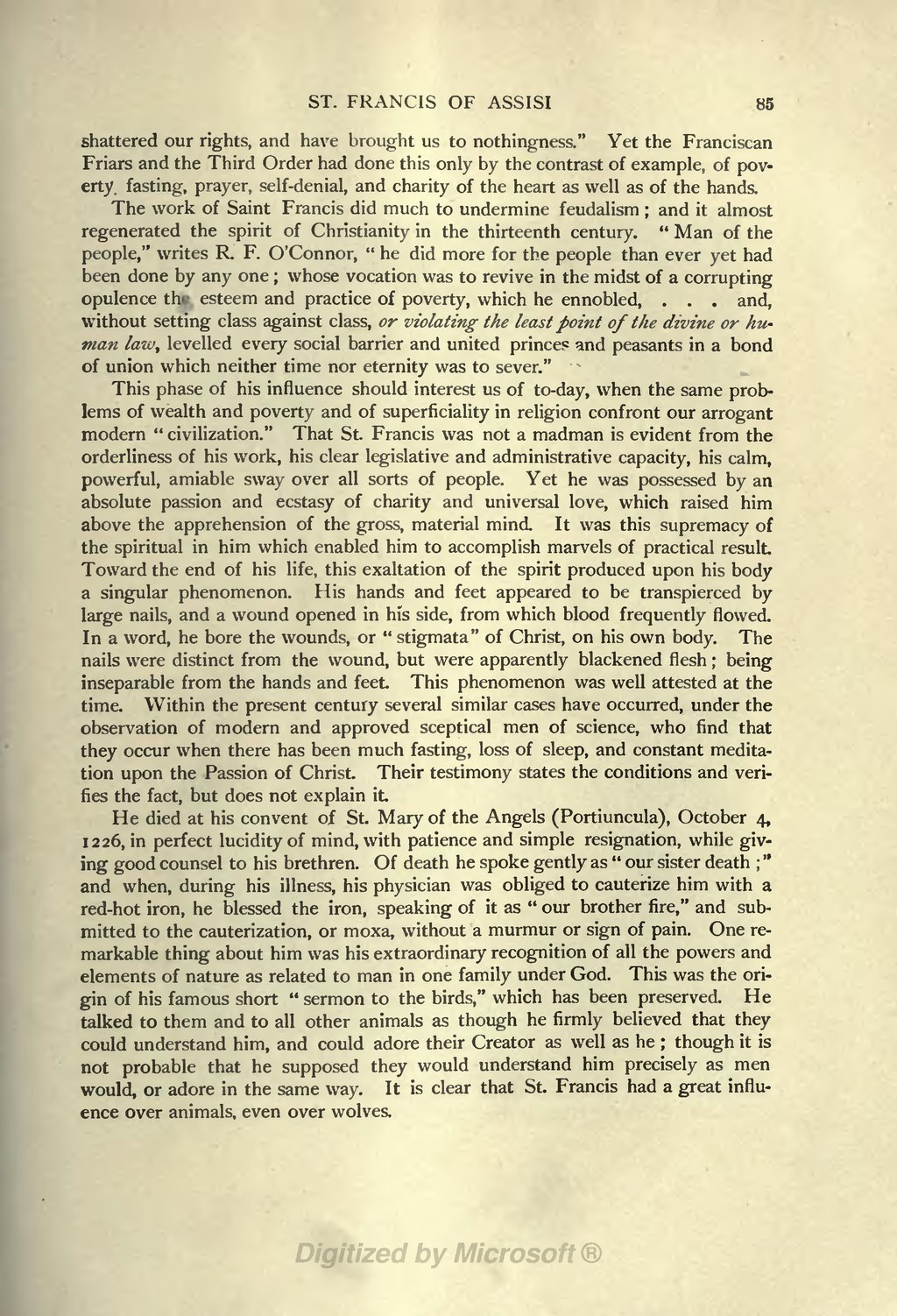ST. FRANCIS OF ASSISI 85 shattered our rights, and have brought us to nothingness." Yet the Franciscan Friars and the Third Order had done this only by the contrast of example, of pov- erty, fasting, prayer, self-denial, and charity of the heart as well as of the hands. The work of Saint Francis did much to undermine feudalism ; and it almost regenerated the spirit of Christianity in the thirteenth century. " Man of the people," writes R. F. O'Connor, " he did more for the people than ever yet had been done by any one ; whose vocation was to revive in the midst of a corrupting opulence the esteem and practice of poverty, which he ennobled, . . . and, without setting class against class, or violating the least point of the divine or hu- man law, levelled every social barrier and united prince? and peasants in a bond of union which neither time nor eternity was to sever." This phase of his influence should interest us of to-day, when the same prob- lems of wealth and poverty and of superficiality in religion confront our arrogant modern "civilization." That St. Francis was not a madman is evident from the orderliness of his work, his clear legislative and administrative capacity, his calm, powerful, amiable sway over all sorts of people. Yet he was possessed by an absolute passion and ecstasy of charity and universal love, which raised him above the apprehension of the gross, material mind. It was this supremacy of the spiritual in him which enabled him to accomplish marvels of practical result Toward the end of his life, this exaltation of the spirit produced upon his body a singular phenomenon. His hands and feet appeared to be transpierced by large nails, and a wound opened in his side, from which blood frequently flowed. In a word, he bore the wounds, or " stigmata" of Christ, on his own body. The nails were distinct from the wound, but were apparently blackened flesh ; being inseparable from the hands and feet. This phenomenon was well attested at the time. Within the present century several similar cases have occurred, under the observation of modern and approved sceptical men of science, who find that they occur when there has been much fasting, loss of sleep, and constant medita- tion upon the Passion of Christ. Their testimony states the conditions and veri- fies the fact, but does not explain it. He died at his convent of St. Mary of the Angels (Portiuncula), October 4, 1226, in perfect lucidity of mind, with patience and simple resignation, while giv- ing good counsel to his brethren. Of death he spoke gently as " our sister death ; " and when, during his illness, his physician was obliged to cauterize him with a red-hot iron, he blessed the iron, speaking of it as " our brother fire," and sub- mitted to the cauterization, or moxa, without a murmur or sign of pain. One re- markable thing about him was his extraordinary recognition of all the powers and elements of nature as related to man in one family under God. This was the ori- gin of his famous short " sermon to the birds," which has been preserved. He talked to them and to all other animals as though he firmly believed that they could understand him, and could adore their Creator as well as he ; though it is not probable that he supposed they would understand him precisely as men would, or adore in the same way. It is clear that St. Francis had a great influ- ence over animals, even over wolves.
